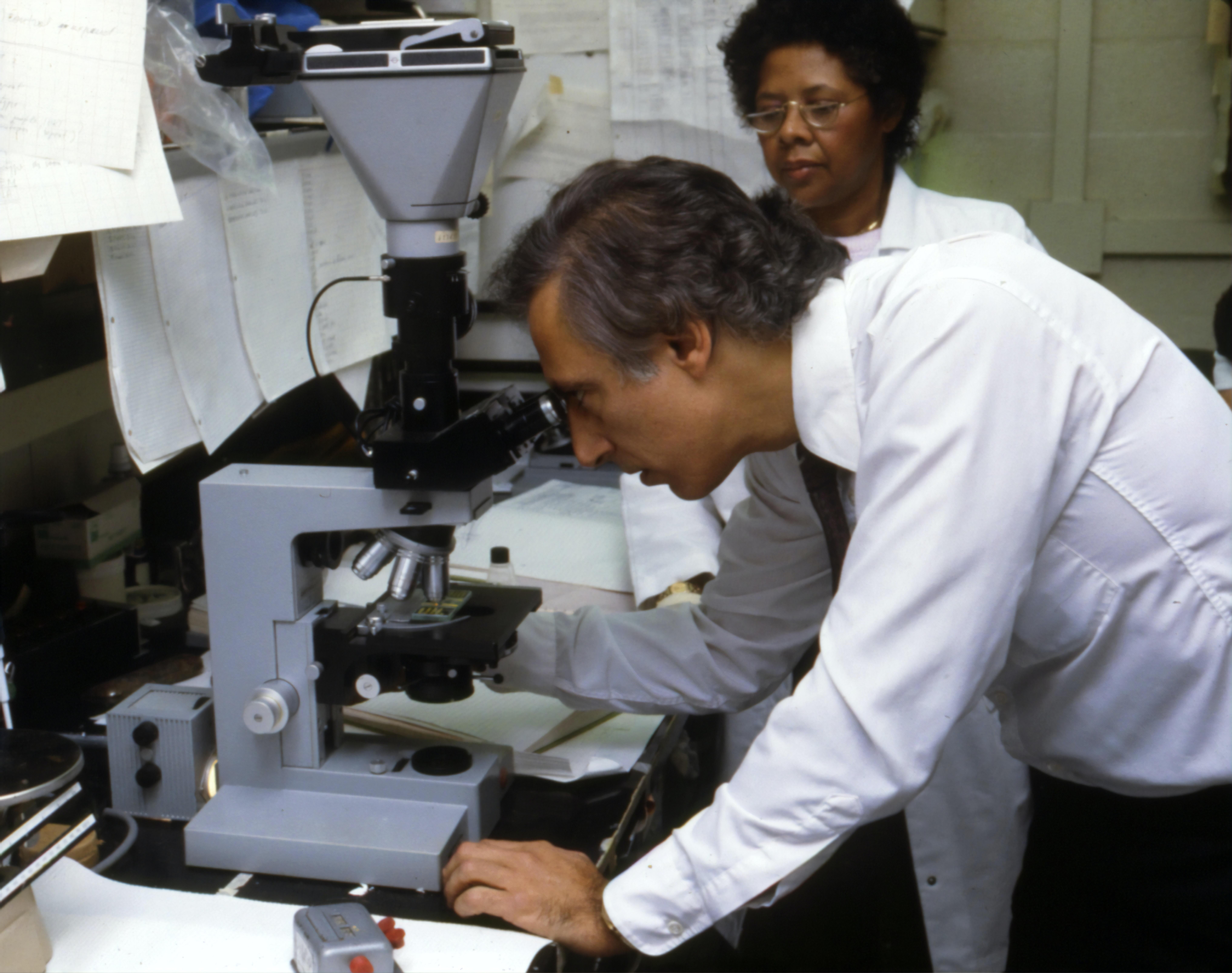Are you ready to embark on a journey of discovery through the microscopic world? Get ready to be astounded by the fascinating facts and wonders that compound microscopes have to offer. In this article, we will delve into the intriguing world of compound microscopes and unravel their mysteries. From their revolutionary design to their unbelievable capabilities, join me as we uncover the remarkable facts about compound microscopes and explore the hidden secrets they hold. Prepare to be amazed as we unveil the wonders of the compound microscope!

Facts About Compound Microscopes
Compound microscopes are incredible scientific instruments that have revolutionized the way we explore the microscopic world. With their ability to magnify tiny specimens and produce detailed 2-dimensional images, these microscopes offer a window into a realm that would otherwise remain hidden from our naked eyes. Let’s dive into some intriguing facts about compound microscopes and unravel the wonders they hold.
1. A Compound Microscope’s Lens System: Unlocking the World of Small
At the heart of a compound microscope lies its lens system, consisting of two or more convex lenses. These lenses work in tandem to magnify the image of a specimen, allowing us to see its intricate details. The objective lens, with its short focal length, plays a vital role in enlarging the image, making it easily viewable and studyable.
Key Point: The lens system in a compound microscope brings the microscopic world to life, revealing hidden wonders that are otherwise invisible to us.
2. Magnification: Unveiling the Tiniest of Details
When it comes to magnification, compound microscopes truly shine. With their typical magnification range of 40x to 1000x, they can bring even the tiniest details of a specimen into focus. It is fascinating to think that a small drop of pond water can be transformed into a mesmerizing landscape, revealing a bustling community of microorganisms.
Key Point: Through compound microscopes, we can witness the intricate beauty of the microscopic world and gain a deeper understanding of its complexity.
3. Multiple Configurations: Finding the Perfect Fit
Compound microscopes come in various configurations to suit different needs. Whether it’s a monocular microscope for individual use, a binocular microscope for shared observations, or a trinocular microscope for capturing images and videos, there is a configuration that fits every scientific pursuit. These different setups offer flexibility and adaptability, making compound microscopes versatile tools for a wide range of applications.
Key Point: The diverse configurations of compound microscopes allow scientists, researchers, and enthusiasts to find the perfect match for their specific requirements, ensuring a seamless exploration of the microscopic world.
4. Practicality and Real-world Applications
Compound microscopes are indispensable tools in many scientific fields. From medical research and diagnostics to environmental studies and forensics, these microscopes play a crucial role in unraveling the mysteries of the microscopic world. They enable us to study cells, bacteria, protozoa, and plant tissues, opening up new avenues for scientific breakthroughs and discoveries.
Key Point: Compound microscopes are not just fascinating instruments; they are practical tools that aid scientific progress and contribute to our understanding of the world around us.
In conclusion, compound microscopes are remarkable devices that have revolutionized our ability to explore the microcosmos. Through their lens system, they bring the hidden wonders of the tiny world into view, offering us a glimpse into the intricate beauty and complexity that resides within. With their versatility and practical applications, compound microscopes hold a prominent place in scientific exploration, continually expanding our knowledge and opening up new frontiers of discovery.
So, next time you gaze through the eyepiece of a compound microscope, take a moment to appreciate the incredible journey it has taken you on, revealing the hidden marvels that lie beyond our naked eyes.
“Through the lens of a compound microscope, the invisible becomes visible, and the extraordinary emerges from the seemingly ordinary.”
Microscopes have fascinated scientists and researchers for centuries, allowing us to explore the intricate world of the tiniest organisms. If you’re curious to learn more about the facts behind these incredible instruments, click here for a captivating journey through the world of microscope wonders. Discover the history, types, and mind-blowing capabilities of microscopes, and prepare to be amazed. Enjoy the adventure! Facts about the microscope
Facts About Compound Microscope
If you’re a science enthusiast and love exploring the microscopic world, then you’re in for a treat! We’ve got some fascinating and intriguing facts about the compound microscope that will amaze you. Did you know that the compound microscope is capable of magnifying objects up to 1,000 times? It’s incredible how this tool allows us to see the tiniest details of cells, bacteria, and other microorganisms.
Now, let’s dive into some captivating facts about compound microscopes. Are you ready to be amazed? Click here to uncover the intriguing world of compound microscopes and explore the hidden wonders that lie beyond our naked eye: Fascinating facts about compound microscope.
But wait, there’s even more to learn! Discover the mind-boggling capabilities of compound microscopes and the secrets they unveil about our microscopic universe. Click here to unravel the mysteries: Intriguing facts about compound microscope.
There is so much to explore and learn about compound microscopes, and these links will take you on an adventure you won’t want to miss. Get ready to be captivated by the extraordinary world that exists right before our eyes, hidden in plain sight. So, what are you waiting for? Start your journey into the realm of microscopic wonders now!
How a Compound Microscope Works: A Comprehensive Guide
[youtube v=”4x-2GHBel0A”]
The construction and working of a compound microscope are fascinating, providing scientists and enthusiasts with the ability to explore the microscopic world in incredible detail. With a system of multiple lenses, compound microscopes collect light from the object and focus it into the eye, magnifying even the tiniest specimens. Let’s dive into the intricacies of how a compound microscope works.
The Lens System: Unlocking the Microscopic World
The lens system of a compound microscope consists of several important components, with each playing a crucial role in the magnification process. There are three major parts: the body tube, the objective lens, and the eyepiece.
-
The Body Tube: Comprised of two smaller telescoping tubes with lenses on either end, the body tube allows for precise adjustment of the distance between the lenses. This adjustability is facilitated by coarse and fine adjustment knobs, enabling the user to slide the tubes and vary the distance between them.
-
The Objective Lens: Positioned closer to the object, the objective lens has a short focal length, typically below 1 centimeter. Its primary function is to collect light from the object and create a real, inverted, and magnified image.
-
The Eyepiece: Located closer to the eye, the eyepiece acts as a magnifying glass. Although it also has a short focal length, it is greater than that of the objective lens. By adjusting the eyepiece, a virtual, erect, and further magnified image is formed.
Unveiling the Magnification Power
The magnifying power of a compound microscope is expressed in diameters, denoting how many times the object is magnified. For example, if a lens magnifies an object five times, it is written as 5X. The total magnification of a compound microscope is calculated by multiplying the magnifying power of the objective and the eyepiece.
Applications and Significance
Compound microscopes find applications in various scientific fields, revolutionizing research and exploration. Their ability to magnify tiny specimens to a substantial size has contributed to significant scientific breakthroughs and discoveries. With magnification ranges typically between 40X and 1000X, compound microscopes enable the study of cells, bacteria, protozoa, and plant tissues, among other specimens. They have practical uses in medical research, diagnostics, environmental studies, forensic investigations, and many other areas of study.
These microscopes continuously expand our knowledge of the microscopic world, opening up new frontiers of discovery. By allowing us to visualize intricate details and hidden marvels, compound microscopes hold a prominent place in scientific exploration.
In conclusion, the compound microscope, with its lens system and magnification capabilities, provides scientists and researchers with a powerful tool to delve into the hidden intricacies of the microscopic world. Its impact in various scientific domains cannot be understated as it contributes to our understanding of the smallest building blocks of life. So, grab your microscope, and let’s embark on a journey of exploration and wonder.
“The compound microscope, with its ability to magnify tiny specimens and reveal intricate details, has revolutionized our understanding of the microscopic world.”
FAQ
Q: What are the main characteristics of a compound microscope?
A: A compound microscope has two or more convex lenses, uses one objective lens at a time, produces 2-dimensional images, and typically has a magnification between 40x and 1000x. It can be found in different configurations: monocular, binocular, and trinocular.
Q: What can you view using a compound microscope?
A: A compound microscope is used to view specimens that are not visible to the naked eye, such as blood cells. It is particularly effective for studying animal cells, plant cells, protozoa, and bacteria.
Q: How does a compound microscope work?
A: A compound microscope operates through a compound lens system, using two sets of lenses to magnify the image of a specimen. The objective lens has a short focal length and enlarges the image for easy viewing and study.
Q: What is the magnification range of a compound microscope?
A: The typical magnification range of a compound microscope is between 40x and 1000x. It achieves this range through the combination of 3-5 objective lenses ranging from 4x-100x, along with 10x eyepieces.
Q: What are the practical applications of a compound microscope?
A: A compound microscope is an essential tool for various scientific applications. It is commonly used in biology laboratories, medical research, educational institutions, and forensic investigations. Its versatility allows for detailed examination of small specimens and the production of 2-dimensional images.
- Jerry McSorley’s Post-Divorce Life: New Beginnings - July 16, 2025
- The Rise and Fall of the New Haven Nighthawks: A Minor League Hockey Legacy - July 16, 2025
- Unlock Jerry McSorley’s Career Highlights: Eye Tax Inc.’s Solar Success - July 16, 2025
















